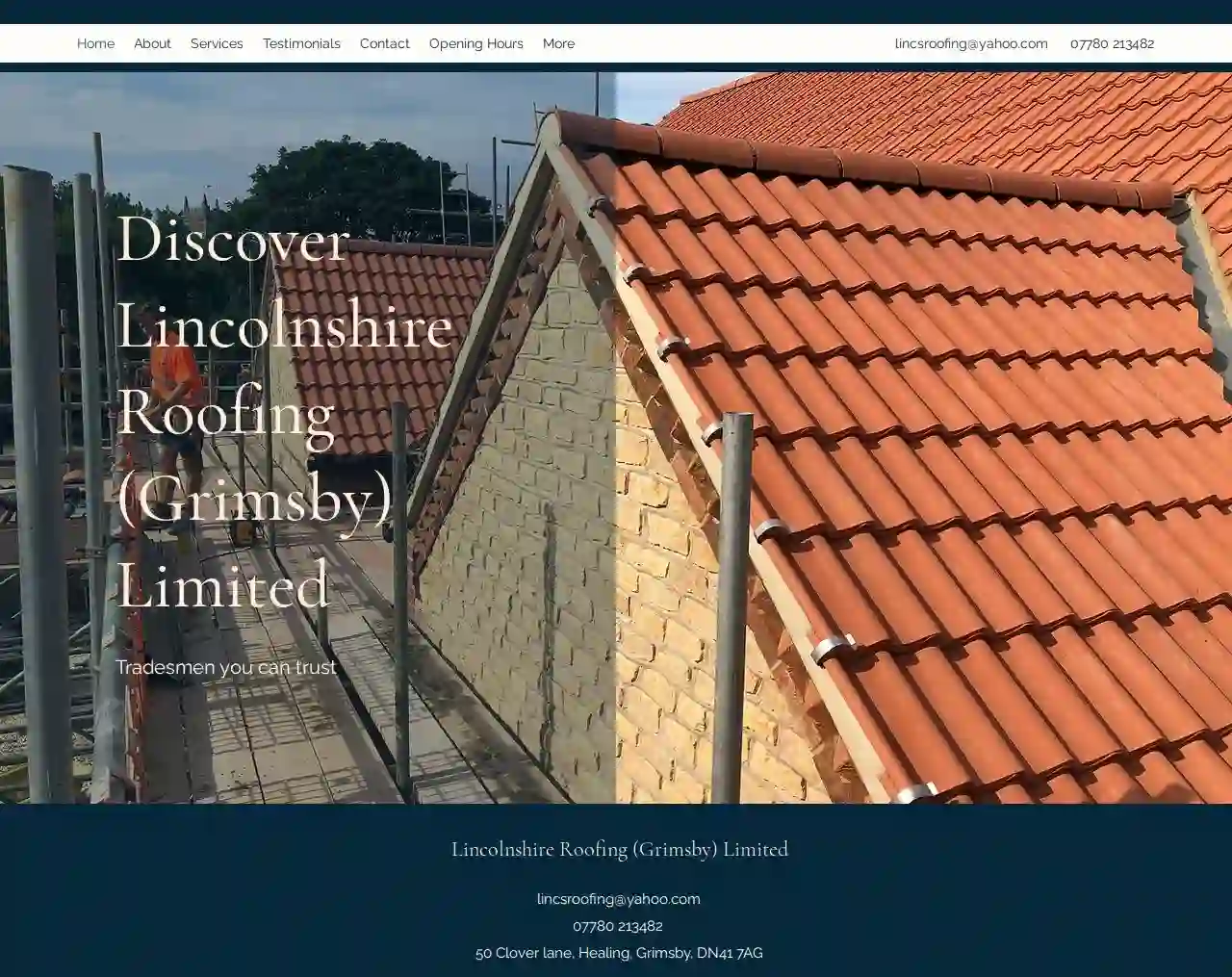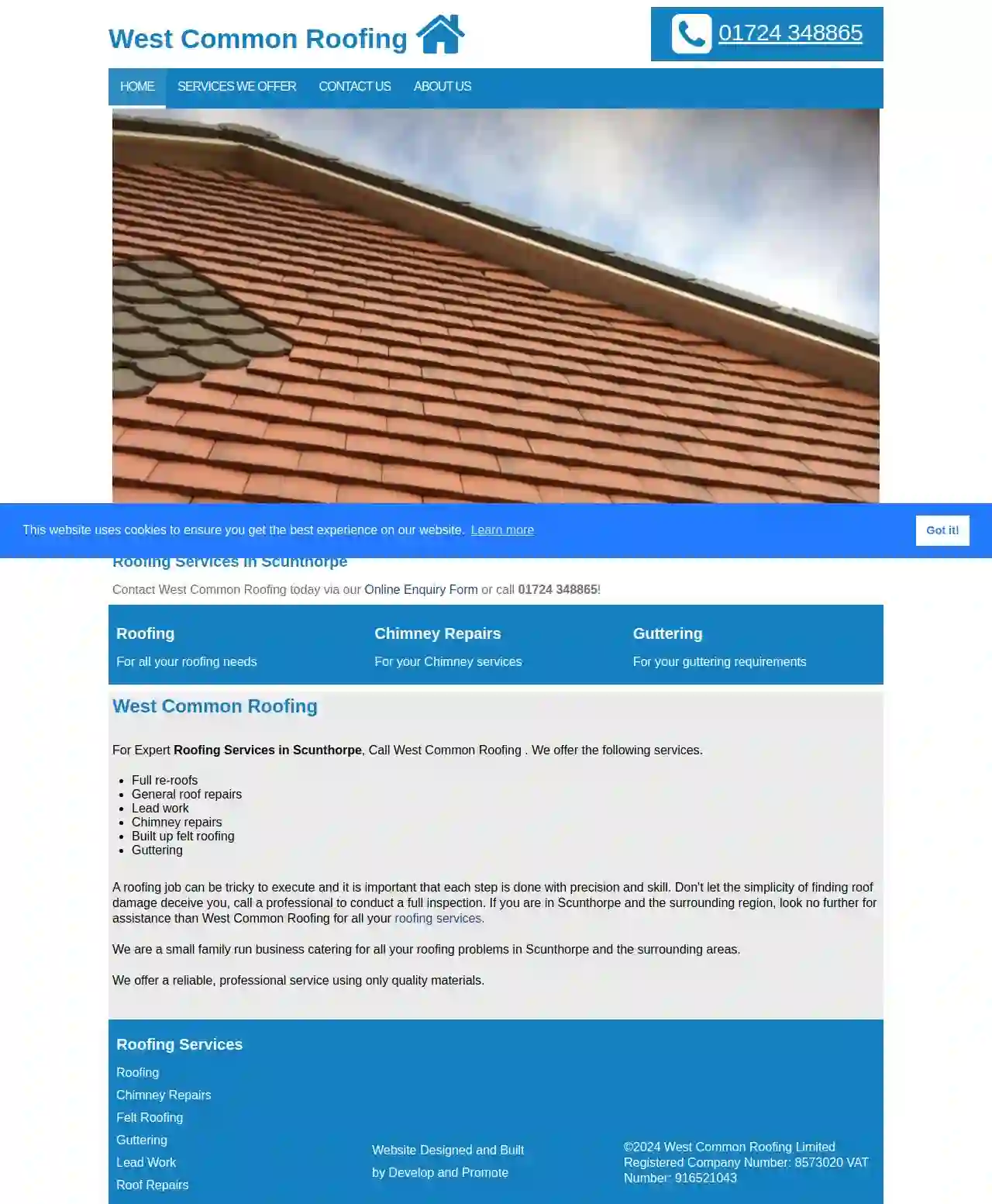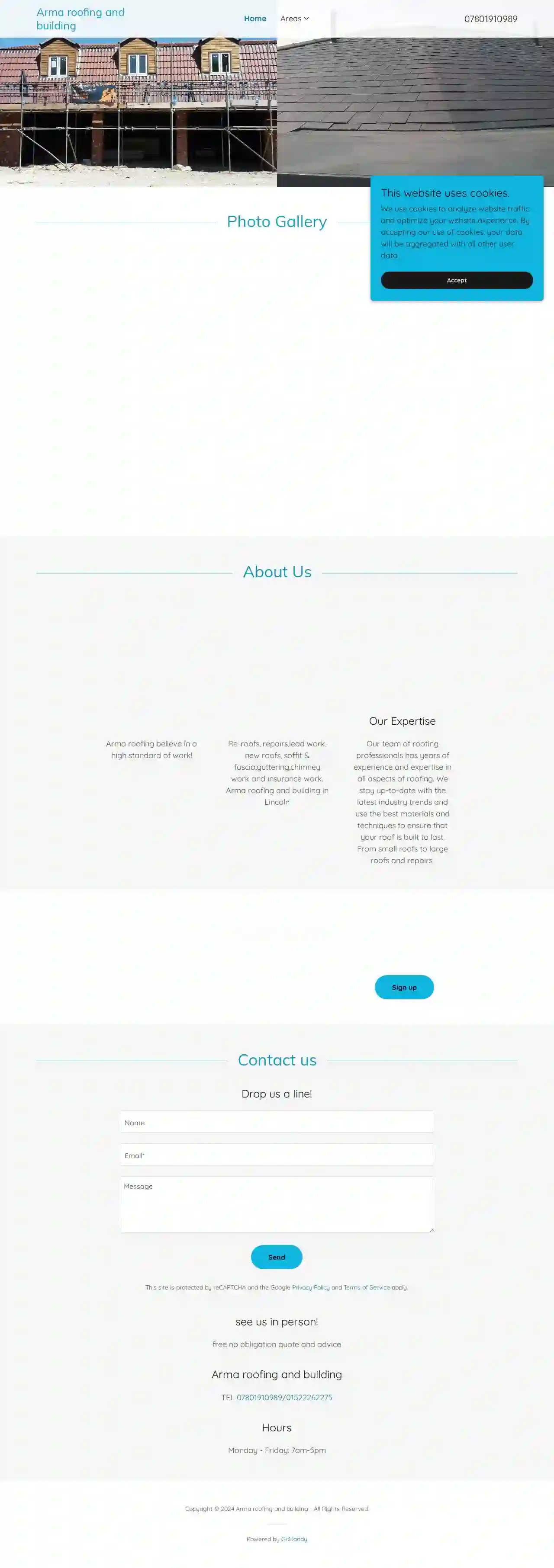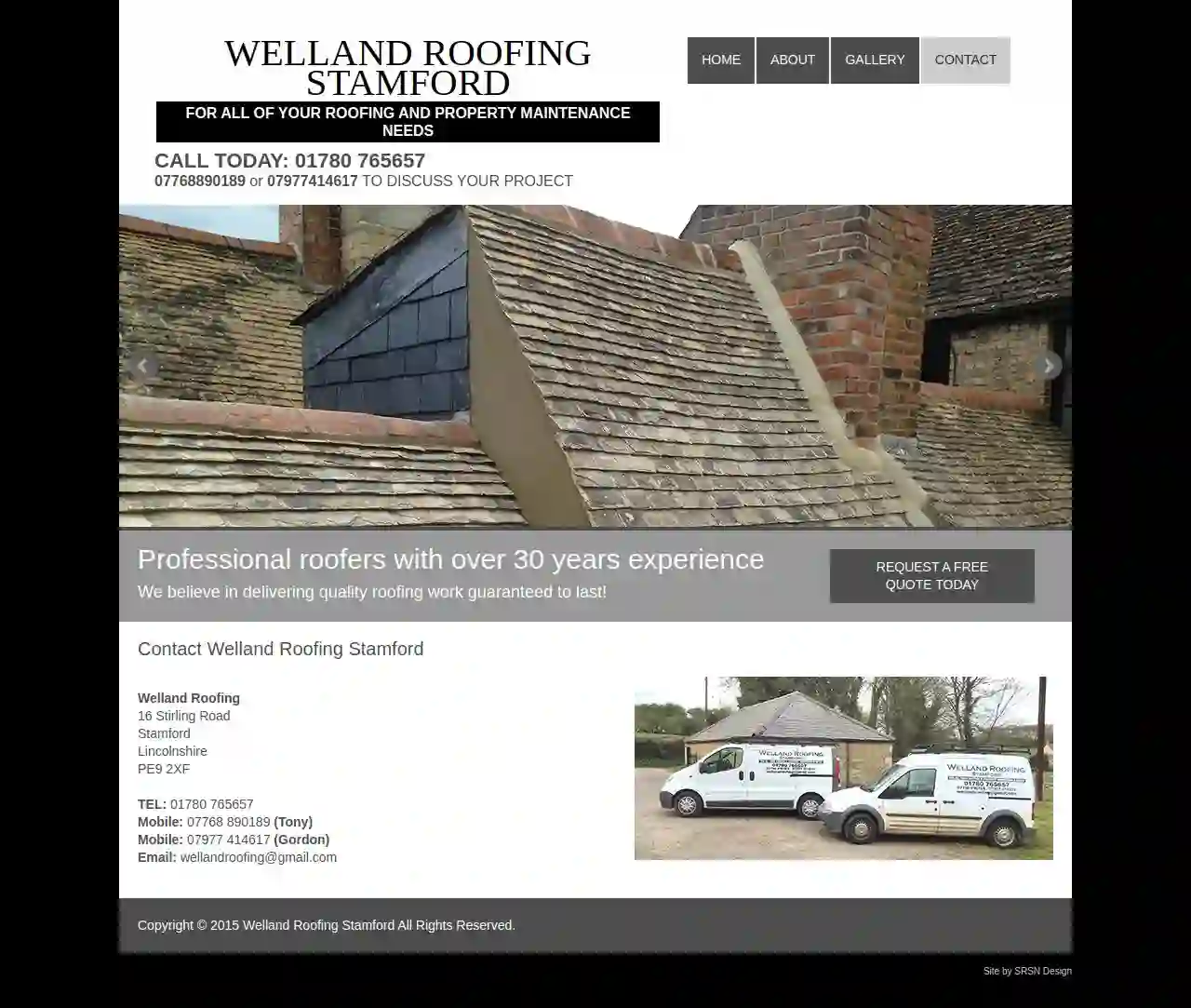Roofing Companies Grimsby
Find the best Roofing Contractor in Grimsby
Receive multiple Roofing Companies quotes for your project today! Compare profiles, reviews, accreditations, portfolio, etc... and choose the best service.

Style Roofing
3.829 reviewsGBStyle Roofing is a family-run business with over 25 years of experience in all aspects of roofing. We pride ourselves on providing a high-quality, professional service at competitive prices. Our team of skilled roofers is fully qualified and insured, and we are committed to delivering complete customer satisfaction. We cover all types of roofing work, from small repairs to complete new builds. Whether you need a new roof, a roof repair, or simply your gutters cleaned, Style Roofing is the company to call. We offer a wide range of roofing services, including: Guttering & Roof Clearance UPVC Fascias Flat Roofing New Roofs Roof Repair Chimney Work We are fully committed to providing our customers with the highest quality workmanship and customer service. We are also fully insured, so you can be confident that your property is in safe hands. Contact us today for a free quote.
- Services
- Why Us?
- Our Team
- Testimonials
- Gallery
Get Quote
Acorn Roofing
113 Haviland Road, Boscombe, BH7 6HJ, GBAcorn Roofing is a roofing company based in Bournemouth, Dorset, specializing in all aspects of roofing. They have over half a century of experience and offer a range of services including roofing, flat roofing, roofing repairs, and fascias & soffits. The company uses a variety of materials such as natural slate, concrete tiles, artificial slate, clay tiles, second-hand tiles, and slates for both domestic and commercial properties. Acorn Roofing prides itself on providing a quality service with expert advice and a commitment to customer satisfaction.
- Services
- Why Us?
- Our Team
- Testimonials
- Gallery
Get Quote
Lincolnshire roofing
50 Clover lane, Grimsby, DN41 7AG, GBLincolnshire Roofing (Grimsby) Limited is a trusted roofing company serving the Grimsby area. We offer a comprehensive range of roofing services, including roof replacements, skylight installations, lead work, roof repairs, new build roofs, flat roofs, and bespoke timber products. Our team of experienced roofers is dedicated to providing high-quality workmanship and exceptional customer service. We are fully insured and committed to exceeding your expectations. Whether you need a minor repair or a complete roof overhaul, Lincolnshire Roofing (Grimsby) Limited is the company to call. We offer free estimates and competitive pricing. Contact us today to discuss your roofing needs.
- Services
- Why Us?
- Gallery
Get Quote
West Common Roofing
4.38 reviews16 Kings Way, Scunthorpe, DN17 1BL, GBWest Common Roofing is a family run business based in Scunthorpe, serving the surrounding areas. We offer a reliable and professional roofing service, using only quality materials. We understand that a roofing job can be tricky to execute, and it's important that each step is done with precision and skill. Don't let the simplicity of finding roof damage deceive you - call a professional to conduct a full inspection. We cater for all your roofing problems, from full re-roofs to general roof repairs, lead work, chimney repairs and built up felt roofing.
- Services
- Why Us?
- Gallery
Get Quote
Arma Roofing & Building
55 reviewsGBArma roofing and building is a reputable roofing and building company with a high standard of work. Our team of roofing professionals has years of experience and expertise in all aspects of roofing, including re-roofs, repairs, lead work, new roofs, soffit & fascia, guttering, chimney work, and insurance work. We stay up-to-date with the latest industry trends and use the best materials and techniques to ensure that your roof is built to last. From small roofs to large roofs and repairs, we have the expertise to get the job done. Contact us today for a free no-obligation quote and advice.
- Services
- Why Us?
- Gallery
Get Quote- JB
JBJ Roofing Services
1000 S. Broadway, Suite 100, Santa Maria, 93001, GB- Services
- Why Us?
- Gallery
Get Quote 
Bournemouth Roofing Co Ltd
4.513 reviewsChristchurch, BH17 0AA, GBDavid Roe is the director of Bournemouth Roofing Co Ltd, a well-established, locally based roofing and maintenance company serving Bournemouth, Poole, Ferndown, and Christchurch for over 40 years. We specialize in fast small roof repairs and all aspects of domestic and commercial roofing. Our team of highly experienced and professional roofers ensures all work is completed to the highest standards. We pride ourselves on our quality, reliability, and extremely efficient and friendly service. We are fully insured and offer a same-day service where possible.
- Services
- Why Us?
- Our Team
- Testimonials
- Gallery
Get Quote
WELLAND ROOFING STAMFORD
4.25 reviews16 Stirling Road, Stamford, PE9 2XF, GBWelland Roofing Stamford is a professional roofing company with over 30 years of experience. We believe in delivering quality roofing work guaranteed to last. Our team of experts provides a range of services, including small jobs and repairs, blue slate and tiling, Collyweston Slate, and lead work. We are committed to providing a cost-effective and comprehensive roof repairs service to our domestic and commercial customers. With a strong reputation for reliability, responsiveness, and competitive pricing, we have built a loyal customer base in Stamford and surrounding areas.
- Services
- Why Us?
- Our Team
- Testimonials
- Gallery
Get Quote
Tritton Roofing
3.73 reviewsGBLincolnshire Roofing Network is a network of trusted roofing professionals serving Lincolnshire and surrounding areas. We offer a comprehensive range of roofing services for both domestic and commercial properties, including roof repairs, flat roofing, pitched roofing, fascias and soffits, and more. Our members are highly skilled and experienced in all aspects of roofing, ensuring quality workmanship and customer satisfaction. We understand the importance of a well-built roof, and we are committed to providing reliable and durable solutions to protect your property. Whether you need a small repair or a complete roof replacement, our team can help. Contact us today for a free quote and let us take care of your roofing needs.
- Services
- Why Us?
- Gallery
Get Quote
Ramskill Roofing
53 reviewsGoole, GBRamskill Roofing is a family-run roofing business based in Goole, Yorkshire, with over 60 years of experience in the industry. We are proud to be one of the most experienced and knowledgeable roofers in the area, serving both homeowners and building contractors throughout Yorkshire and nationwide for commercial contracts. We have a long-standing reputation for our high-quality workmanship, integrity, and friendly approach. Our team of skilled roofers, led by David, Paul, and Craig Ramskill, are dedicated to providing our customers with the best possible service. We are committed to using the latest techniques and materials to ensure that all our work is completed to the highest standard. We offer a full range of roofing services, from emergency repairs to complete new roof installations. We also specialize in storm damage repair and can provide a free quote for all our services.
- Services
- Why Us?
- Accreditations
- Our Team
- Testimonials
- Gallery
Get Quote
Over 12,314+ Roofing Contractors in our network
Our roofing contractors operate in Grimsby & surrounding areas!
Roofyng.co.uk has curated and vetted the Best Roofers in Grimsby. Find a reliable business today.
Frequently Asked Questions About Roofing Companies
- Leaks or Water Stains: Water stains on ceilings or walls, dripping water, or dampness in the attic.
- Missing, Cracked, or Curled Shingles: Inspect for damaged or missing shingles, especially after a storm.
- Damaged Flashing: Look for rust, corrosion, or gaps in flashing around chimneys, vents, or skylights.
- Sagging or Uneven Rooflines: A sagging roof could indicate structural problems.
- Granule Loss: Excessive granules in gutters suggest aging asphalt shingles.
- Moss or Algae Growth: Can trap moisture and damage roofing materials.
- Metal roofs: Reflect sunlight, reducing cooling costs.
- Tile roofs: Offer thermal mass, regulating temperature.
- Cool roofs: White or light-colored roofs with high solar reflectance.
- Green roofs: Vegetated roofs providing insulation and reducing heat absorption.
- Choose Reflective Roofing Materials: Opt for light-colored shingles or metal roofing that reflects sunlight and reduces heat absorption.
- Install Proper Attic Insulation: Adequate insulation prevents heat loss in the winter and heat gain in the summer.
- Ensure Adequate Ventilation: Proper attic ventilation allows hot air to escape, reducing cooling costs and extending the lifespan of your roof.
- Consider a Radiant Barrier: In hot climates, a radiant barrier installed in the attic can reflect heat away from the roof, further reducing cooling needs.
- Ventilation: Soffit vents provide intake ventilation, allowing fresh air to enter the attic and regulate temperature and moisture.
- Aesthetics: It creates a finished look to the roof's underside.
- Pest Control: A properly sealed soffit prevents pests like birds and squirrels from nesting in the attic.
What are some common signs of roof damage?
What are some energy-efficient roofing options?
How can I make my new roof more energy-efficient?
What is a soffit, and why is it important for my roof?
What are some common signs of roof damage?
- Leaks or Water Stains: Water stains on ceilings or walls, dripping water, or dampness in the attic.
- Missing, Cracked, or Curled Shingles: Inspect for damaged or missing shingles, especially after a storm.
- Damaged Flashing: Look for rust, corrosion, or gaps in flashing around chimneys, vents, or skylights.
- Sagging or Uneven Rooflines: A sagging roof could indicate structural problems.
- Granule Loss: Excessive granules in gutters suggest aging asphalt shingles.
- Moss or Algae Growth: Can trap moisture and damage roofing materials.
What are some energy-efficient roofing options?
- Metal roofs: Reflect sunlight, reducing cooling costs.
- Tile roofs: Offer thermal mass, regulating temperature.
- Cool roofs: White or light-colored roofs with high solar reflectance.
- Green roofs: Vegetated roofs providing insulation and reducing heat absorption.
How can I make my new roof more energy-efficient?
- Choose Reflective Roofing Materials: Opt for light-colored shingles or metal roofing that reflects sunlight and reduces heat absorption.
- Install Proper Attic Insulation: Adequate insulation prevents heat loss in the winter and heat gain in the summer.
- Ensure Adequate Ventilation: Proper attic ventilation allows hot air to escape, reducing cooling costs and extending the lifespan of your roof.
- Consider a Radiant Barrier: In hot climates, a radiant barrier installed in the attic can reflect heat away from the roof, further reducing cooling needs.
What is a soffit, and why is it important for my roof?
- Ventilation: Soffit vents provide intake ventilation, allowing fresh air to enter the attic and regulate temperature and moisture.
- Aesthetics: It creates a finished look to the roof's underside.
- Pest Control: A properly sealed soffit prevents pests like birds and squirrels from nesting in the attic.